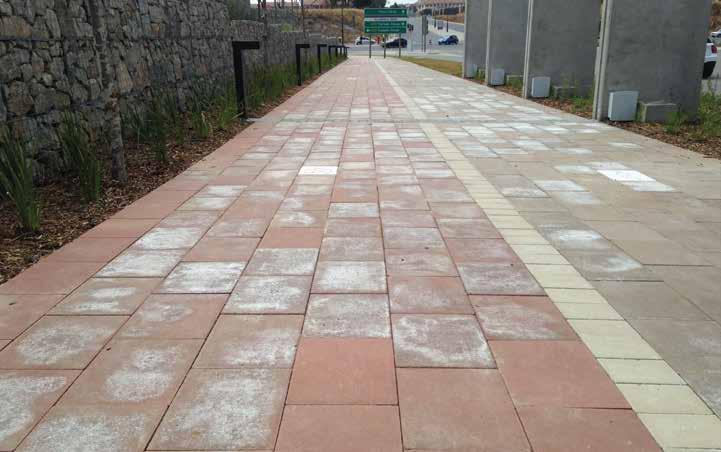
1 minute read
Innovation
Castle Bottom Kerb Conventional Kerb

Advertisement






Castle Bottom Kerb
An innovation in kerbs is the Bosun Castle Bottom Kerb, currently available in our 1 000mm Figure 3, Figure 7 and Figure 8C kerb. (Please see page 110, 111 and 112.)
The Castle Bottom Kerb has ribs or cavities across the bottom of its surface.
Advantages of Castle Bottom Kerbs, compared with conventional kerbs:
• The cavities provide a grip for installers when laying the kerbs, A which allows for much easier handling. (Left Row ) • The cavities make the Castle Bottom Kerb much quicker and easier to install. Where unlevelled screed surfaces force installers to uplift, fill up and re-lay conventional kerbs, it is easier to manoeuvre a Castle Bottom Kerb into place, with the screed being displaced into the cavities in the kerb. (Left Rows & ) • Kerbs are laid on a concrete screed. Because the Castle Bottom has more point loads, it will sink into the screed, providing much better adhesion in all directions. The Castle Bottom eliminates air pockets in the screed beneath the kerb. Air pockets could create tensile weaknesses beneath the kerb when installed. (Left Row ). Patent: ZA 2012\09544
B C D

Kerbs with nibs
Bosun’s Figures 3 and 7 kerbs are available with nibs. Please see page 110.)
Advantages of Kerbs with nibs compared with conventional kerbs:
• The nibs ensure easier installation with the correct spacing between kerbs. • This reduces the likelihood of air pockets in the grout. • Because the nibs touch the adjacent kerb, greater force stability is achieved, resulting in less movement when installed.








